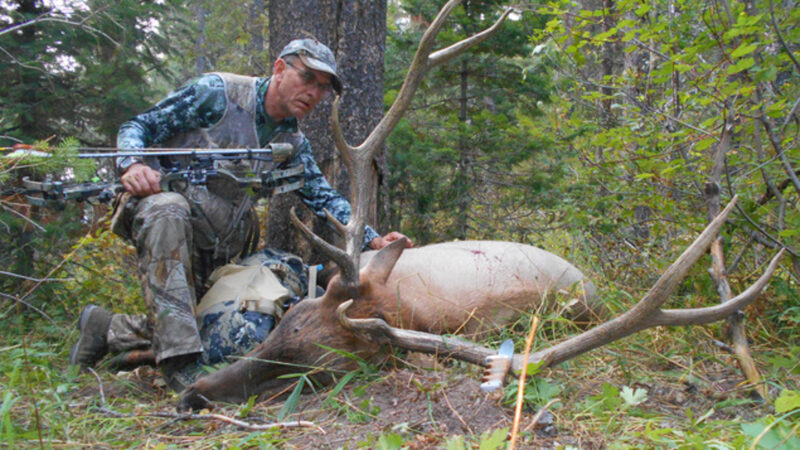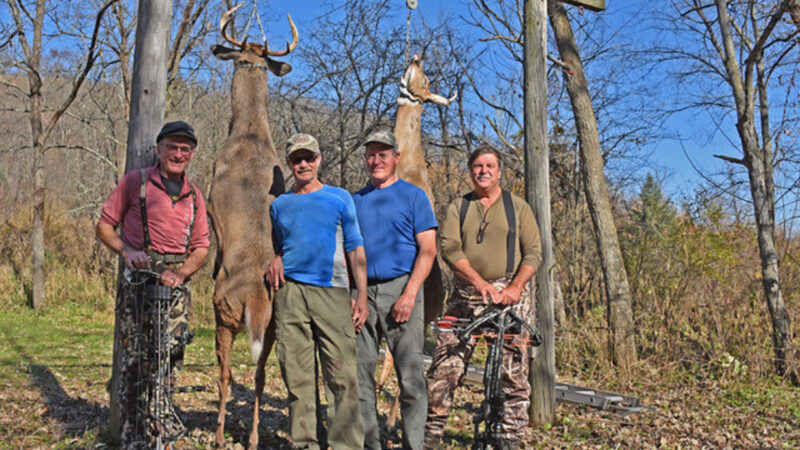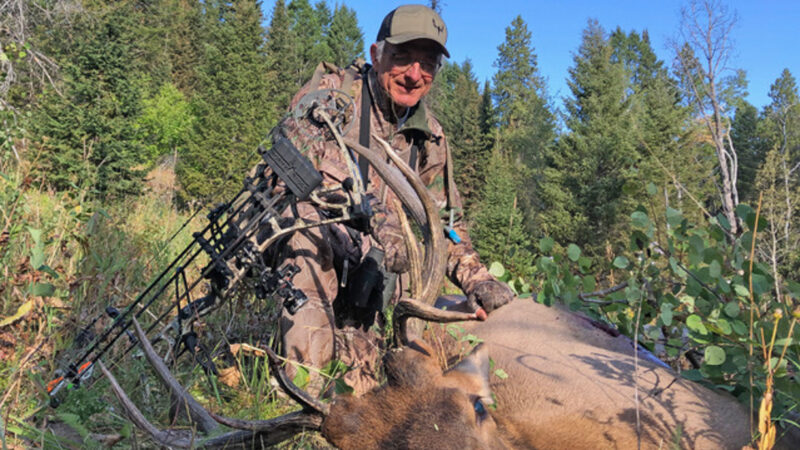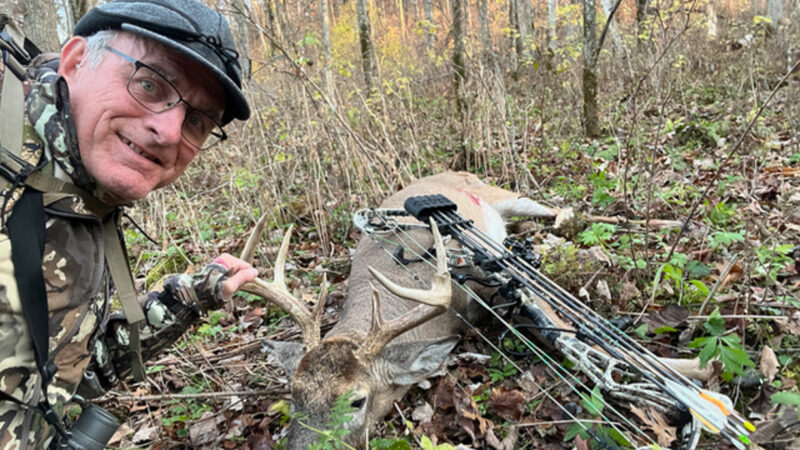While test-shooting several models of three- and four-blade 100-grain broadheads recently, I couldn’t help but think about my first archery season for white-tailed deer 52 years ago.
My bowhunting setup in 1971 consisted of cedar arrows, Bear Razorhead broadheads, and a 43-pound Bear Grizzly recurve bow. I traded away that bow in 1974 after switching to an Allen compound bow.
I’m now hunting with my 15th bow since switching to compounds 49 years ago. Most of those retired bows hung in my basement’s rafters until my wife and I sold that house and downsized nearly three years ago. I couldn’t bring myself to get rid of them until storing them became inconvenient.

In the interest of safety — mine and anyone nearby – I never shot most of those compounds again after hanging them up, especially the first two. And in the interest of my left forearm, I never shot a third bow, either. Its string had a painful tendency to smack my forearm at the least hint of handle torque.
Sentiment is the only thing keeping those three bows to this day. One is the Allen compound bow, and the others are a Wing Impact II I bought in 1977, and a Bear Archery compound I built from a kit in 1983.
Until the day I gave the rest away two summers ago to anyone who wanted them, I felt confident shooting and hunting with any of the other 10 or so compounds I’ve owned, all bought or acquired since the late 1980s.
Even though practice, perseverance and woodsmanship separate good bowhunters from average-and-worse bowhunters, today’s archery equipment makes average shooters good, and good shooters excellent. The new bows and arrows now available are clearly superior to anything I hunted with from the 1970s through the early 1990s.
I’ll also take today’s broadheads over the reputable, but heavy, Bodkin, Bear Razorhead and Ben Pearson Switchblade broadheads of my youth and young adulthood. For instance, throughout spring and summer I practice with 100-grain field-points in the backyard. When I replace the field-points with three-blade 100-grain broadheads made by Wac Em, Muzzy, New Archery Products and others, I only need to tweak my bowsight.
I doubt my bow is tuned any more finely than most archers’ bows, but it still launches most broadheads with bull’s-eye accuracy. I never achieved similar “out-of-the-box” performance with yesterday’s broadheads.

I attribute some of that accuracy to the mechanical trigger release I use instead of the traditional three-finger approach that dominated my early years. I didn’t switch to a release until 1983, after struggling with a bad flinch the previous year. I made that switch and never looked back.
Or maybe it’s today’s fall-away rests that make the biggest difference. I was impressed how much better broadheads shot when I scrapped the old shoot-through rest for a fall-away nearly 20 years ago.
Or maybe it’s the carbon and/or carbon/aluminum combination shafts that make the difference? No matter. All of today’s shafts are far straighter and more consistent than the old cedar and fiberglass shafts I used in the early 1970s.

Through 1995, though, I killed deer with now-ancient heavy aluminum shafts — Easton 2020s for you old guys — that I bought in 1977. I moved on only when my supply of 2020s in Easton’s once-common Autumn Orange finish finally ran low in the mid-1990s.
Another huge advantage enjoyed by today’s bowhunters are fiber-optic pin sights. Was it really the mid-1990s when I still thought a dot of red or white paint on a pin sight was as good as it could get, short of battery-powered lighted sights? How quaint.
Although most of those early fiber-optic pins were flimsy and needed constant protecting and replacing, they made up for those shortcomings with high, consistent visibility. Even in the shadows of dawn and dusk, they stayed bright and made battery power almost irrelevant.
Sure, I know what some people are thinking: All this technology creates an unfair advantage for bowhunters. Buck pellets. Despite all those advances, compound bows remain short-range weapons for me. I killed my first deer with a 35-yard shot with the 43-pound recurve bow in 1973, and it still ranks as my farthest shot on a whitetail. My farthest shot on elk is 45 yards, and don’t even raise my bow once they’re farther than 55 yards.
In fact, a good self-imposed restriction for my bowshots on woodland whitetails might always be about 25 yards. The value of today’s equipment is that it reduces the chance for errors and poor shots at such ranges. And besides, most of my woodland setups don’t offer longer shots.

If you’re a master with the old gear, and recurves or longbows, that’s fine. But if you’re not so hot with truly traditional equipment, you might consider compounds or crossbows. That is, if you’re hunting deer or elk, and not history or nostalgia.
I’m as sentimental as the next bowhunter about my old archery gear, but I’m more deadly with the modern gear. And that’s how I view old gear vs. new gear: Even though sentimentality gives me warm feelings, those thoughts wouldn’t outweigh the guilt I’d feel if my old gear wounded a deer unnecessarily.

 By
By 



